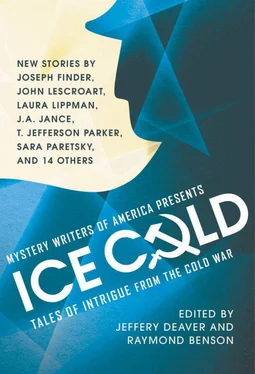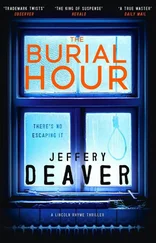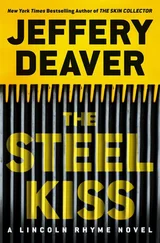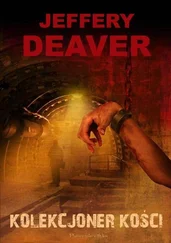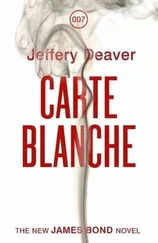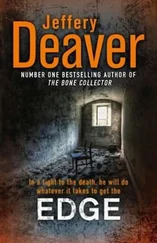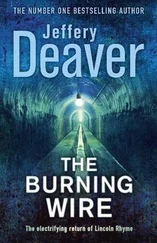The remaining seats of the Aeroflot flight were filled by their escort of hatchet-faced KGB men and one lone woman with the hard expression of a prison matron, who must also be an agent.
They landed in New York at Idlewild Airport and were directed to U.S. Customs. Gribkova pulled Ludmila aside. “Help me.”
But an army of American officials, all disconcertingly friendly and apologetic, whisked them through Customs. Not a single piece of luggage, trunk, box, or garment bag was opened. Not a single person was searched. A professional and diplomatic courtesy, it was understood. A gesture of goodwill toward the staff of an exhibition intended to foster warmer relations between the two superpowers. Besides, the Americans didn’t care if they brought in illegal goods. A suitcase full of caviar, vodka, or furs? All relatively harmless. No, contraband would be the issue on the return journey, and Soviet Customs would not be so accommodating.
Outside, they were blinded by white sunshine. It was blistering, American hot. The only smell was exhaust; the only sight a desert of glittering automobiles, pavement, and ripples of rising heat. Ludmila was glad to be ushered into one of a waiting fleet of shiny black limousines, the interior dim, cool, and enormous. Several KGB men squeezed into the rows of seats with them.
On the drive into the city, the models gaped and exclaimed at the skyline. Ludmila wanted to do the same, but she didn’t dare when she saw Vladlena Gribkova’s impervious disdain. Instead she risked sideways glances out the windows. An assembly line of cars, all of them sounding their horns, inched through the granite crevices of Manhattan. Not only was it louder than she expected, it was also grimier and much darker, even on a sunny June afternoon. The flight had been long, and they were tired, but they were not taken to the hotel.
Instead they were driven to the New York Coliseum, where the exhibition was to take place. They pulled up to a white block of a building that looked like a futuristic flying saucer or a frosted cake. Protesters gathered in front holding signs, “Russkies Go Home.”
Inside, they were met by a group of Americans, five or six men in gray suits and two women. They greeted the Russian delegation warmly as if they’d been the best of friends for many years. Polite introductions were exchanged, the Americans making a valiant effort to pronounce Russian names.
Ludmila was disconcerted by them and their smiles. Their teeth so white. Their shoulders and jaws so square. They seemed as unreal as mannequins.
The exhibition hall was an echoing cavern so large it could have contained whole airplanes. Air conditioning made it artificially cold and clammy, and Ludmila shivered. They were cocooned by an escort of KGB and Americans. An area had been reserved for fashion in the Culture section. There, workmen were constructing platforms, a stage, a runway, and dressing rooms. When Gribkova saw what they had done, she announced, “It’s all wrong. Completely wrong. Who gave you these instructions?” She glared at them. “Wrong. Who told you to do it this way?” she repeated in careful, heavily accented English.
Most of the American workers assembling the exhibition were Negroes. They were the first Negroes Ludmila had ever seen. None of the men were actually black. Each man’s skin was a slightly different color, rich, satiny shades that recalled chocolate, earth, coffee. They in turn stared at Vladlena Gribkova, trying to comprehend the Russian woman.
Two American women pushed their way to the front. Miss Bennett and Miss Johnstone, they’d called themselves. They wore summer suits, stylishly cut, one lilac with black trim, the other navy, both with half sleeves, and Ludmila could scarcely wrench her gaze from them. Both had pulled their hair into smooth buns at the base of their skulls. It turned out they were translators, and Gribkova began to lecture them about the problems with the layout.
Meanwhile, the models clustered in a corner, smoking, Inessa at the center. Ludmila joined them to escape the legion of forbidding gray-suited men. “Why so many KGB? Do they think we’re conducting espionage?” she murmured.
“They must show Soviet superiority by outnumbering the CIA agents,” Inessa whispered, with uncharacteristic sarcasm. At Ludmila’s gasp of surprise, she giggled and added, “But they can’t compete with the Americans on looks. Especially the one on the left. Dreamy.”
Ludmila saw nothing remarkable about the man. Without much enthusiasm, she agreed, “Yes, very handsome.”
After a moment, Inessa continued, “And those are only the KGB that are not undercover.” She inclined her head slightly toward Vladlena Gribkova.
Of course there were informers, there were always informers, everywhere, but Ludmila hadn’t suspected Gribkova. Informers were rarely subtle. They usually tried to entrap people, but Gribkova spoke only about fashion. How would Inessa know? “I don’t believe you,” she said aloud.
Inessa shrugged. “Just watch yourself around her, okay?”
Why would Inessa warn Ludmila? Just because she was wearing Ludmila’s dress? No. It was more likely Inessa thought Ludmila had a future; that Ludmila would design clothes for her, help her build a modeling career. Ludmila was flattered, but had no intention of worrying about someone else. She had her own career to think about.
And then there wasn’t time to think about anything. First, the garments had to be unpacked, pressed, hung up. One of the evening gowns was misplaced and panic ensued. Instead of joining the hunt, with breathless anxiety Ludmila looked for her own dress. Inessa was uncharacteristically helpful. Together the two of them located the box, which had been mislabeled “sewing tools and supplies.” Inessa even helped her unpack it and found a place for it on the clothes rack.
Then, showroom exhibits had to be installed as well as the final preparations for the fashion show made. The evening before the opening day, a special preview and reception would be held, which would be attended by Deputy Premier Kozlov and other top Soviet officials, Vice President Nixon and his wife and daughter, the American and Soviet press, and many other illustrious dignitaries of both nations. It all had to be perfect. The order of models had to be adjusted. Last-minute alterations had to be made.
Days at the Coliseum sped by in a frenzy of pressing, trimming, cutting, and stitching. Vladlena Gribkova never asked for advice, and Ludmila never offered it. Ludmila just watched and learned, and little by little, it seemed, Vladlena came to trust her and rely on her.
In contrast, the models were useless, too giddy and lazy to be delegated the simplest task. When they didn’t manage to slip out to tour New York, trailed by KGB, they loafed, drinking Cokes, smoking, and looking at the Vogue magazine they’d bought from the corner newsstand. They also flirted with the Americans, or at least tried to.
They stopped when one of the KGB men looked their way. Except for Inessa. She paid the KGB no mind and they, miraculously, didn’t seem to harass her.
As Ludmila watched, Inessa blatantly waved at one of the American CIA men who seemed particularly taken with her.
Ludmila resolved to distance herself from the girl even more.
“Where is she?” Vladlena screeched. “The devil take that girl! I should never have brought her. Where is she? I’ll send her back tomorrow, so help me.”
It was the morning dress rehearsal before the evening preview. It had been decided that Ludmila’s dress would finish the show, a position of great prestige. Ludmila might have been ecstatic if Inessa wasn’t missing. She’d been on the bus with them from the hotel, but once they’d reached the Coliseum, she’d disappeared. Off on some stupid lark, Ludmila thought, numb with frustration and despair. When the girl finally turned up, she’d probably charm the searching KGB men into not reporting her, too. But by that time it might be too late.
Читать дальше
